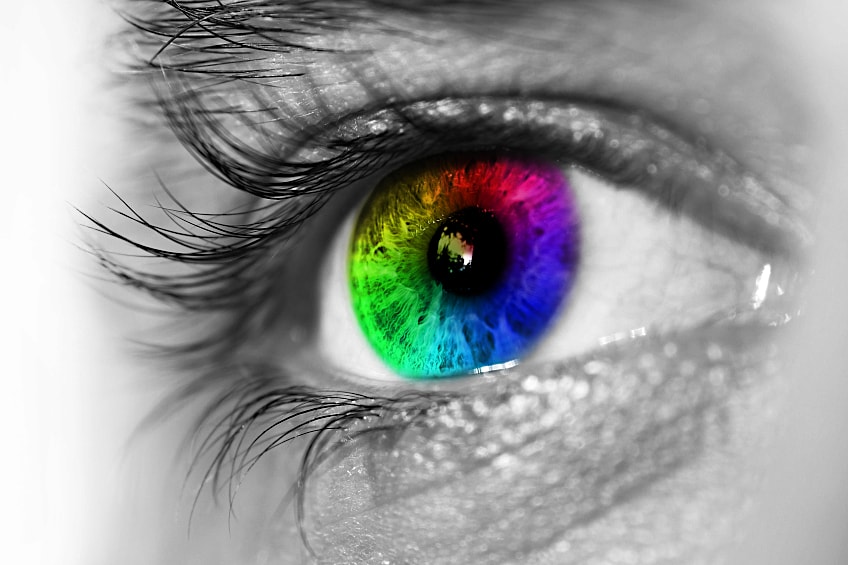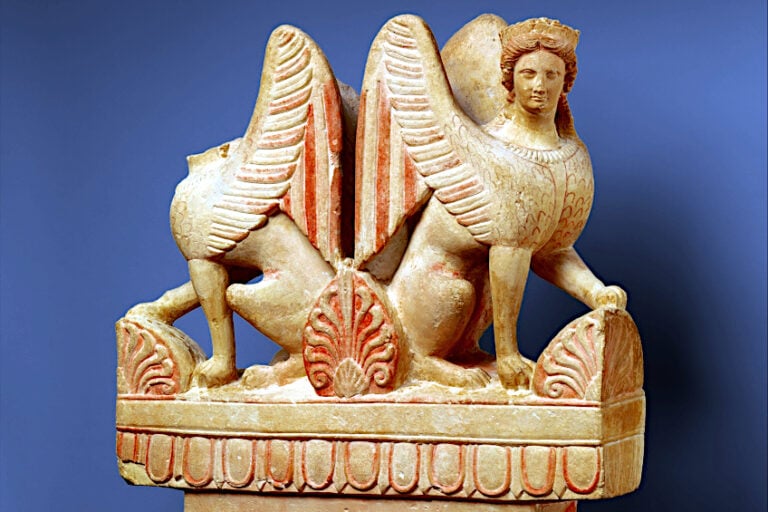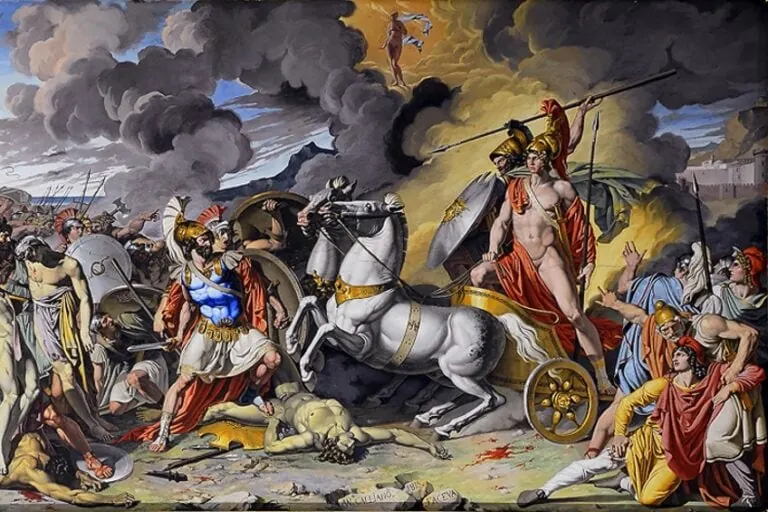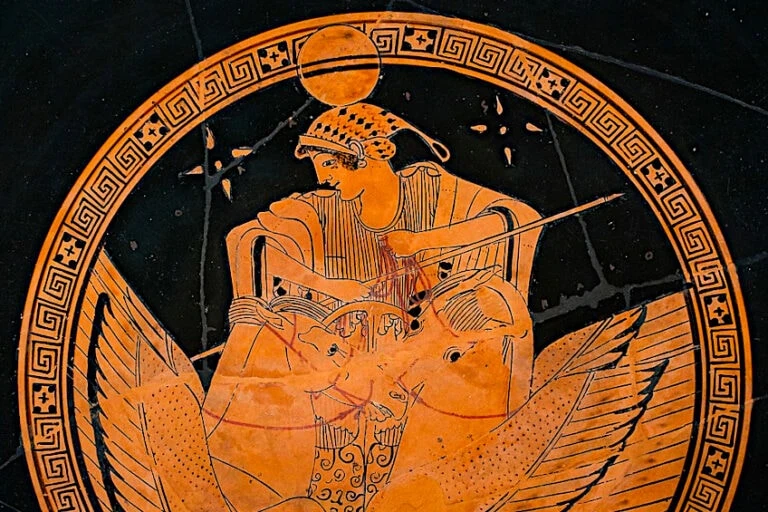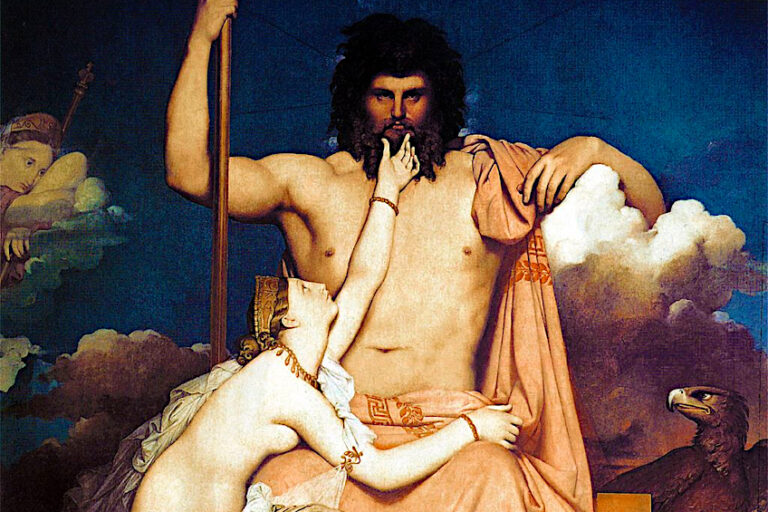Greek Goddess Theia – Celestial Source of Sight and Light
The Greek goddess Theia is the Titan goddess of sight and light, and the mother of the sun, moon, and dawn. Theia is believed to be the one who bestowed upon gems and metals their shine and value, and the gift of sight upon mankind with which we view and appreciate them. As a true queenly figure of the heavens in Greek mythology, join us in finding out more about this shining Titaness.
Theia: The Goddess of Sight and Light
| Name | Theia |
| Gender | Female |
| God of | Sight and light |
| Personality | Dignified and wise |
| Symbols | Eyes and light |
| Consorts | Hyperion |
| Children | Helios, Selene, and Eos |
| Parents | Gaia and Uranus |
The Greek goddess Theia was a Titaness of Greek mythology who was considered as the Titan goddess of sight and brilliance. While she rarely appears in myth she is considered an important figure through her children and held as the source of value for precious gems and metals. She is believed to reside in the palace of her son Helios, in the far reaches of Oceanus.
Theia’s Background and Family
The eldest daughter of the first-generation Titans, her mythological status is ancient. She is not mentioned much in myth outside of her relations and in rare traditions so her origins and worship is generally speculative.
Her name Theia is translated to mean “goddess” or “divine”, however she is also given the name Euryphasessa. Euryphasessa’s root words ‘eurye’ and ‘phaos’ mean “wide” and “light” respectively.
Thus, she is “wide-shining” Theia, and conveys her connections to light and brilliance. Theia was considered to have “many names”, which may have been connotations with other goddesses. Her name is also connected to the words ‘thea’ meaning “sight” and ’theiazô’ meaning “prophecy”. She is named Aethra or the “blue sky” Pseudo-Hyginus (2nd century ACE) and given the name Basileia in the unconventional work of Diodorus Siculis (1st century BCE ).
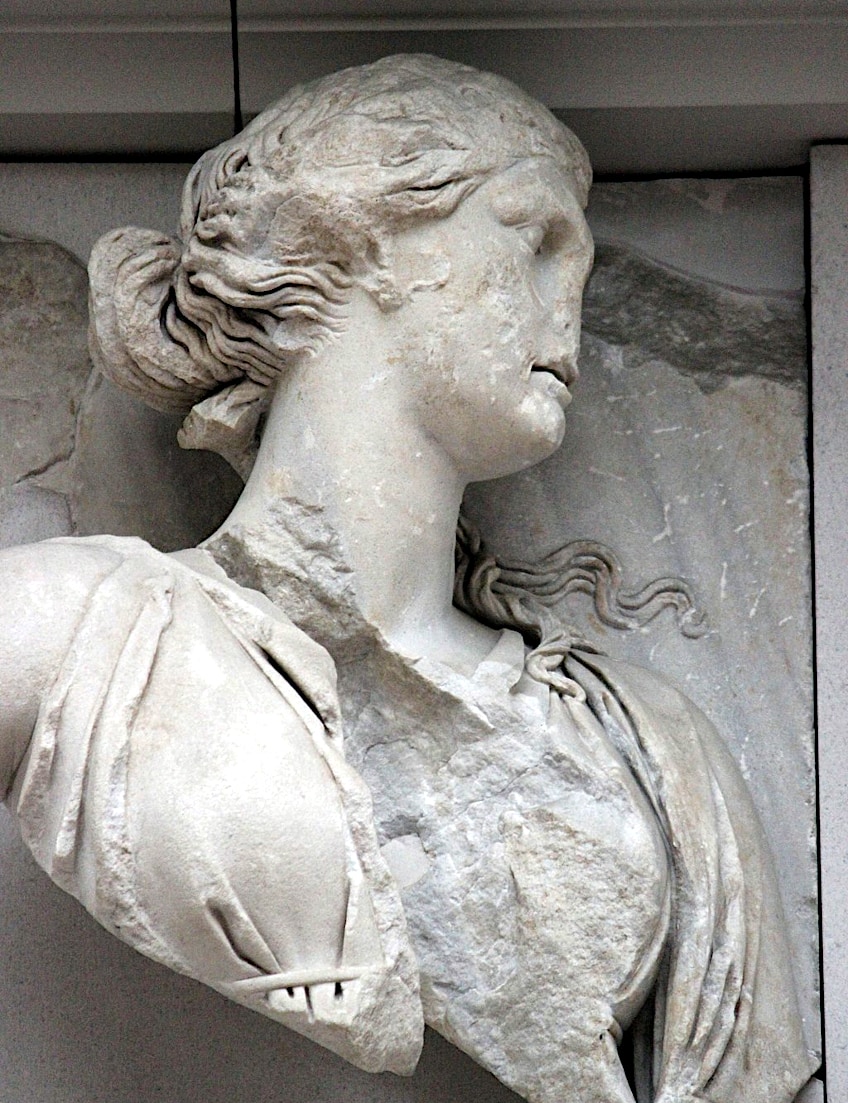 Detail from the frieze of the Great Altar at Pergamon showing Theia fighting the Giants (2nd Century BCE); Miguel Hermoso Cuesta, CC BY-SA 4.0, via Wikimedia Commons
Detail from the frieze of the Great Altar at Pergamon showing Theia fighting the Giants (2nd Century BCE); Miguel Hermoso Cuesta, CC BY-SA 4.0, via Wikimedia Commons
Her role in everyday and cult life is largely a mystery, as little information surrounding it has survived. Outside of sight and shimmering treasures she has little known regard outside her honor as the mother of the trio of heavenly light. She may have served as a figure of prophecy but perhaps not to the extent of some of her more noteworthy Titan sisters.
Family
The Greek goddess Theia was a Titan daughter of Gaia, the earth, and Uranus, the sky. Her siblings thus include the other eleven Titans, the Cyclopes, the Hectohenries, the Giants, the Meliae, the Erinyes, several sea deities, and monsters like Typhon and Python.
Theia is wife to one of her brothers, the Titan Hyperion.
With him Theia bore the celestial siblings; Helios, the personification of the sun, and his sisters, the personification of the moon Selene, and Eos the personification of the dawn.
 Roman Intaglio depicting Helios in his chariot and Selene with a star in the sky; Naples National Archaeological Museum, CC0, via Wikimedia Commons
Roman Intaglio depicting Helios in his chariot and Selene with a star in the sky; Naples National Archaeological Museum, CC0, via Wikimedia Commons
The Role of the Greek Goddess Theia
We know very little of the roles Theia played in ancient Greek life, and few images of her remain today. Theia is mostly referenced in literature in regards to honoring her through her children which fits her genealogical role in Greek mythology.
Queen-Mother
The Greek goddess Theia’s role in mythology is almost entirely centered on her support of her husband and children. She is a queen of the heavens and is particularly honored as the mother of Helios, the Greek sun-god. She is possibly associated and/or conflated with other queen-mother-of-the-sun type figures. She may have been present for the birth of Apollo as one of the “chiefest of goddesses” as Ichnaea.
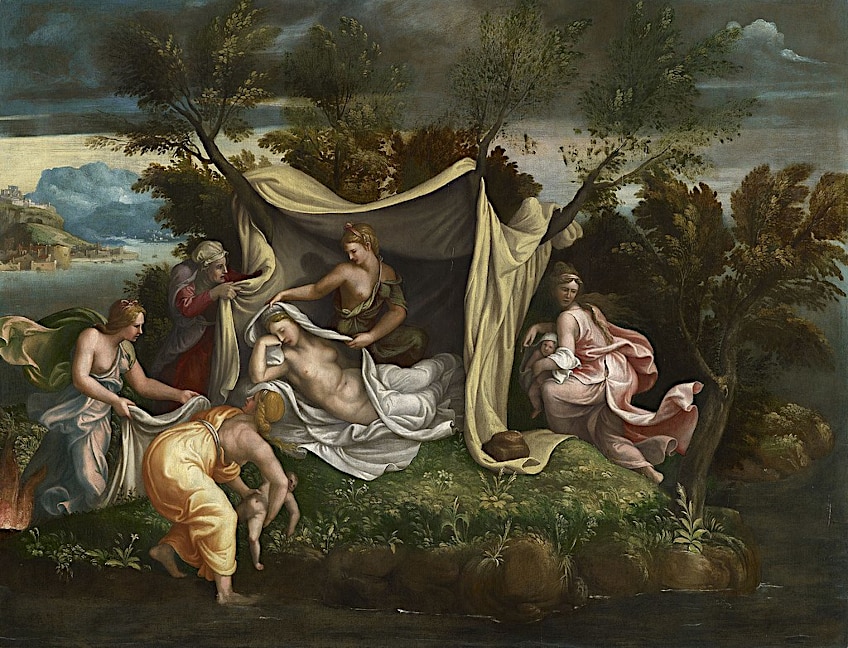 The Birth of Diana (Artemis) and Apollo from the workshop of Giulio Romano (between 1530 and 1540); Royal Collection, Public domain, via Wikimedia Commons
The Birth of Diana (Artemis) and Apollo from the workshop of Giulio Romano (between 1530 and 1540); Royal Collection, Public domain, via Wikimedia Commons
An unusual myth by Diodorus Siculus gives her a far more fleshed out and prominent position in myth. She is depicted as the wise ‘Great Mother’, a paragon chosen by Uranus to succeed him, whose children died tragically due to her brothers’ conspiracy.
Theia receives a vision saying they shall be honored and give their names to the celestial holy fires, and upon waking she sets about fulfilling this while she herself is also worshiped as a goddess.
The Lady of Light and Sight
The Titaness’ main representation is that of the source of heavenly light and human sight. She was the cosmogonical understanding of light amounts in the ancient world and is credited to have given gold and gems their shine and value. Her connection to Helios is said to be the reason for mankind’s reverence and pursuit of gold, and the explanation for the glitter and glory of such things.
Some sources claim Theia was held as the source from which all light came.
Her name may come from the word thea or ‘theaomai’, meaning sight or seeing, and have connotations with the Greek beliefs surrounding the sense of sight. Eyes were believed to emit light, much like other light sources would, in a beam-like manner that allowed one to see objects it fell on. The shining Titan goddess of sight is thus the mother of the three celestial sources of light as well. Her husband Hyperion, “he who watches from above”, was suggested as the one who gave mankind the gift of sight which was supported by his wife.
Connotations of the Heavens
Outside of her link to the heavens as the mother of Helios, Selene, and Eos, she herself has many celestial connections. The Titaness’ of ancient Greek myth were considered to be oracular goddesses, and like many heaven-connotated goddesses were linked with prophecy. Oracular shrines allowed one to beseech a god and allowed for divinations and seeing into the future. Theia’s sisters have connections to oracular shrines, such as Phoibe in Delphi, Dione in Dodoma, Mnemosyne in Lebadeia, and Themis who oversaw all oracles.
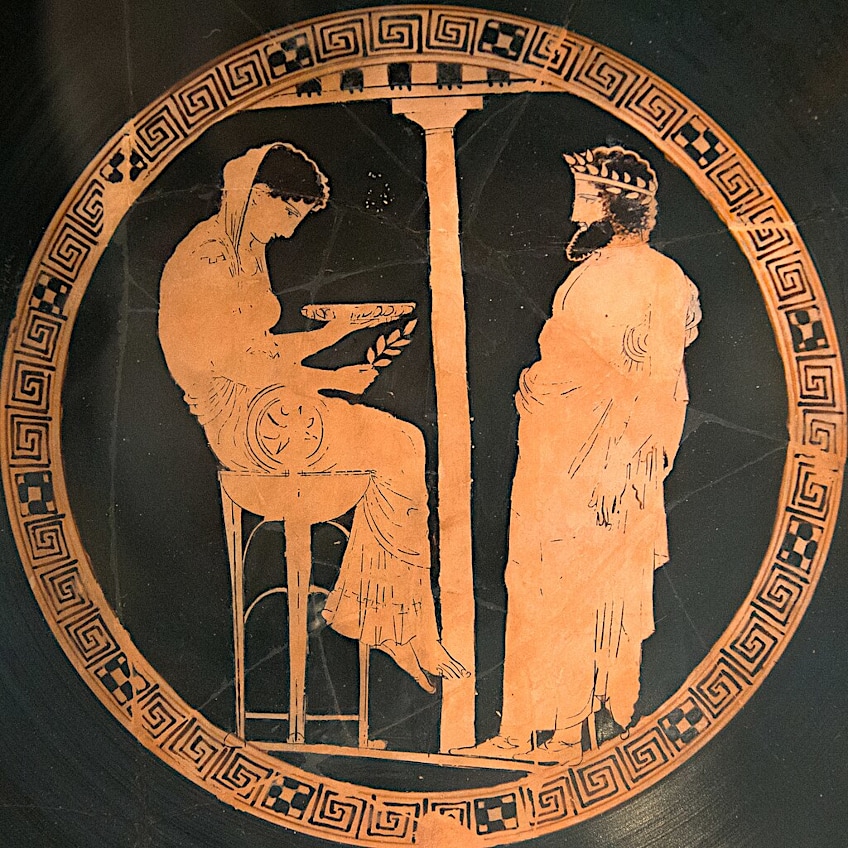 Attic red-figure kylix with a depiction of the Oracle of Delphi (440-430 BCE); Zde, CC BY-SA 4.0, via Wikimedia Commons
Attic red-figure kylix with a depiction of the Oracle of Delphi (440-430 BCE); Zde, CC BY-SA 4.0, via Wikimedia Commons
Combined with her name’s similarity to the word ‘theiazô‘ meaning “prophecy” or “divining”, and the Homeric Hymns to Delian Apollo (7th-4th BCE) seemingly equating her with Ichnaea “the tracing goddess” who has an oracular shrine in Ikhnai, Phthiotis; some sources suggest Theia also held powers of prophecy and allowed one to see their destiny.
Theia is also called Aethra, which refers to the ether or the blue sky. A reference to the bright heights of the atmosphere and a fitting epithet to the daughter of Uranus the sky, and as the mother of the celestial siblings of the sun, moon, and dawn.
Attributes of the Titaness of Sight
We get very little accounts that reference this goddess and even fewer describing her. What we do have however cements Theia’s role as beautiful and powerful, as befits one of the oldest of the deathless goddess. She is described as ‘cow-eyed’ or ‘mild-eyed’ and referred to by the name Euryphaessa meaning “wide-shining”. All her descriptors allude to her shining brilliance and glory, and she is held in high esteem.
 Attic eye-cup kylix (c. 520-510 BCE); Metropolitan Museum of Art, CC0, via Wikimedia Commons
Attic eye-cup kylix (c. 520-510 BCE); Metropolitan Museum of Art, CC0, via Wikimedia Commons
Depictions of her are often beautiful, with long flowing hair. Her sphere means she is clothed in rays of light, often with her children the sun and moon. Her heavenly and prophetic connotations and age imply a queenly reverence for her and that she possesses great wisdom. As she is largely known through her children, she has a motherly element.
These elements of regal dignity and prudence, along with maternal wisdom and care, are especially espoused in Diodorus’ unorthodox mythology, possibly alongside her connections to divinations.
Symbology Associated With Theia
As the Titan goddess of sight, eyes, and light are of particular importance to her depictions and her primary unofficial symbols. Her sphere encompasses various forms of radiance, whether of the great sky or of precious metals and gems. Either way, her representations include shining light, which in modern art includes various forms of nimbus. Her representations may include her holding the sun or moon, referencing her children Helios and Selene who are personifications of the celestial sources of light.
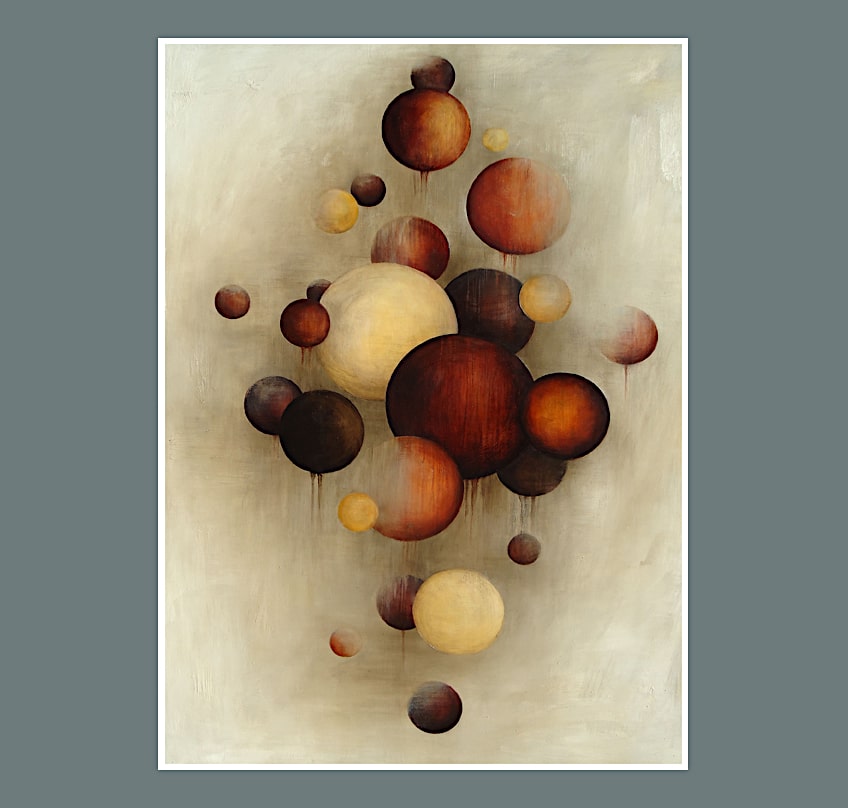 Theia by Monika Steiner (2012); Monika Steiner, CC BY-SA 2.0, via Wikimedia Commons
Theia by Monika Steiner (2012); Monika Steiner, CC BY-SA 2.0, via Wikimedia Commons
Mythology Surrounding the Titaness of Sight and Light
Outside of Hesiod’s Theogony (8th-7th century B.C.E) and its genealogy, we unfortunately hear very little about Theia. Like many Titans she is considered more an origin point and fundamental cosmogonical element in Greek myth. Theia and her Titan sisters remained neutral in the Titanomachy and as such were not punished when the Olympians overthrew the Titans for control of the world.
Theia is considered the prime candidate for the goddess supporting Helios in the frieze of the Great Altar of Pergamon, depicting the Gigantomachy.
The Fabled Dress of Selene
Selene, the goddess of the moon was said to have asked her mother for a ‘garment to fit her measure’. This, her mother replied, was impossible to weave as Selene kept changing her form to various sizes and shapes. As the personification of the moon, she was constantly changing between crescents and half and full moons. While unnamed, Selene’s mother is the Greek goddess Theia, and the tale written by Plutarch was itself similar to a fable.
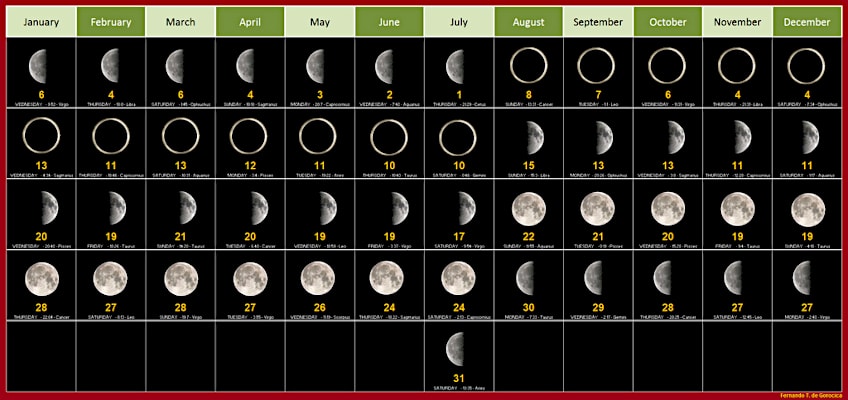 Lunar Calendar for 2021 showing the various phases or shapes of the moon; Fernando de Gorocica, CC BY-SA 4.0, via Wikimedia Commons
Lunar Calendar for 2021 showing the various phases or shapes of the moon; Fernando de Gorocica, CC BY-SA 4.0, via Wikimedia Commons
The Unconventional Myth of Diodorus
Diodorus Siculus was a historian in the 1st century BCE and wrote the Bibliotheca historica. In this work, he writes down an unorthodox version of how the moon and sun came to be. In his writings, Theia, known as Basileia, is the eldest daughter and exceptional child of Uranus. She was a woman of great intellect, understanding, and chastity, and was the source of maternal guidance to her brothers.
When Uranus rose from the ranks of men to join the gods, Theia was his uncontested heir to the throne.
Seeking sons for the succession she married Hyperion and had a son Helios and a daughter Selene. This incited the jealousy and fear of her other brothers who put her husband to the sword and threw her young son into the Eridanus river.
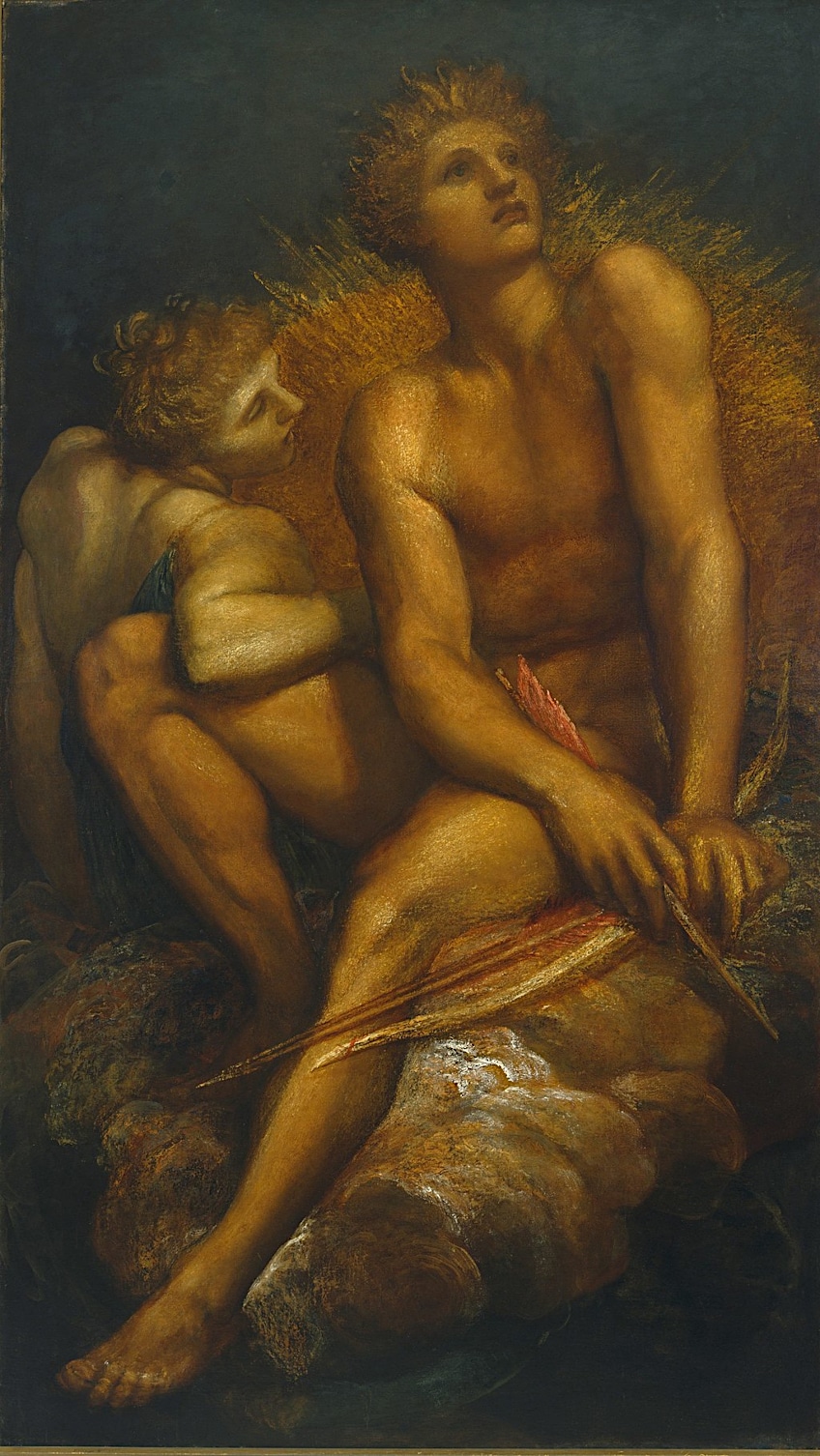 Artemis and Hyperion by George Frederic Watts (c. 1881); George Frederic Watts, Public domain, via Wikimedia Commons
Artemis and Hyperion by George Frederic Watts (c. 1881); George Frederic Watts, Public domain, via Wikimedia Commons
Selene threw herself off a roof in grief for her brother and Theia searched the river before fainting. She dreamed her son told her not to mourn for they would be transformed and the nameless ‘holy fires’ of the sky would be known as Helios the sun and Selene the moon. She told her misfortunes to the crowd, saying her children should have funerary honors like the gods and she would be untouched by men. She wandered the earth with loose hair and making a ruckus with her daughter’s toys, and was pitied until a great storm and flash of thunder and lightning came and she disappeared.
The stunned people gave the names of her children to the stars in the sky and hailed their mother as a goddess, erecting altars and imitating her pounding and clashing instruments in sacrifices and honors to her.
The Legacy of the Titaness Theia Today
We know very little about Theia and that includes how she was worshiped. While her spheres of sight and shining value seem important in everyday life, we have little definitive knowledge about her role in society. Our main sources on her beyond her name come from Pindar’s Fifth Isthmian ode and some fable-like writings.
What we know places her in a role of explaining origins rather than actively influencing, but this cannot discount niche cult interactions or local customs.
Aside from her possible connections to Ichnaea and her oracular shrines, Theia may have had a shrine at Thessaly, and reportedly a figurine from the Necropolis of Cyrene was identified to be of her. Her place as the mother of Selene has also been used in the giant impact hypothesis of the modern day. In this theory, a hypothetical planet is suggested to have collided with Earth and resulted in the formation of the Moon; this planet was named after the Greek goddess Theia in her aspect as mother of the moon.
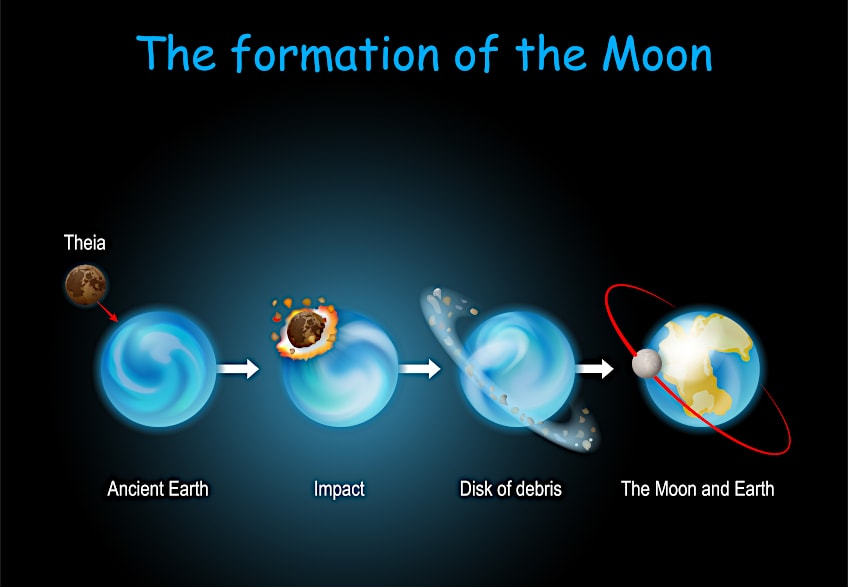 Illustration of the theory on the origins of Earth’s moon; Stock image
Illustration of the theory on the origins of Earth’s moon; Stock image
Her legacy is that of the distinguished and regal mother, who wields her wisdom and power in support of her family and brings the wonder of light and brightness to all. She is the one who allows the heavenly and human guiding light into the world, as goddess of light and sight, and may even shine a light allowing you a glimpse of the future. Her remaining character is that of a strong, self-evident brilliance and benevolently facilitating that same burning light in us all.
The Greek goddess Theia played an important role in explaining how the ancient Greeks understood the world around them. Not only was she a real force in how humans viewed the world but also in how they viewed themselves, as they saw her as an example of wisdom and a source of divination. This beautiful goddess truly caught our eye because even though she is an unsung heroine in mythology, her place of honor remains irrefutable.
Frequently Asked Questions
What Is Theia the Greek Goddess Of?
Theia was the Titan goddess of sight and light in Greek mythology. She was considered the source from which all light preceded, and the one who gave mankind sight and precious metals and gems their shine and value.
What Was the Goddess Theia’s Significance?
Theia and her husband Hyperion were believed to be the ones who gave mankind the sense of sight. The ancient Geeks believed that the eye emitted beams of light that fell on objects and allowed them to be seen, and thus the goddess of light, Theia, was the one who gave them sight. She was also the source of the gods that illuminated the world and revered as the mother of Helios, the sun god, and his siblings Selene, the moon, and Eos, the Dawn.

I am deeply passionate about history and am constantly fascinated by the rich and complex stories of the past. As the editor-in-chief of learning-history.com, I have the opportunity to share this passion with a wide audience through the creation and distribution of engaging and informative content about historical events, persons, and cultures. Whether it’s through writing articles and blog posts or creating videos or podcasts, I strive to bring the past to life in a way that is both accurate and enjoyable. My expertise in history, combined with my strong writing and communication skills, allows me to effectively communicate complex historical concepts and make them accessible and interesting to a wide range of readers. I am truly grateful for the opportunity to share my love of history with others through my work on learning-history.com.

